The National Register of Historic Places (NRHP) is the United States federal government's official list of districts, sites, buildings, structures and objects deemed worthy of preservation for their historical significance. A property listed in the National Register, or located within a National Register Historic District, may qualify for tax incentives derived from the total value of expenses incurred in preserving the property.

The Aztec Ruins National Monument in northwestern New Mexico, USA consists of preserved structures constructed by the Pueblo Indians. The national monument lies on the western bank of the Animas River in Aztec, New Mexico, about 12 miles (19 km) northeast of Farmington. Additional Puebloan structures can be found in Salmon Ruins and Heritage Park, about 9.5 miles (15.3 km) south. Archaeological evidence puts the construction of the ruins in the 12th and 13th centuries. The Puebloan-built ruins were dubbed the "Aztec Ruins" by 19th century American settlers who misattributed their construction to the Aztecs.

John Simpson Chisum was a wealthy cattle baron in the American West in the mid-to-late 19th century. He was born in Hardeman County, Tennessee, and moved with his family to the Republic of Texas in 1837, later finding work as a building contractor. He also served as county clerk in Lamar County. He was of Scottish, English, and Welsh descent.

This is a list of sites in Minnesota which are included in the National Register of Historic Places. There are more than 1,700 properties and historic districts listed on the NRHP; each of Minnesota's 87 counties has at least 2 listings. Twenty-two sites are also National Historic Landmarks.
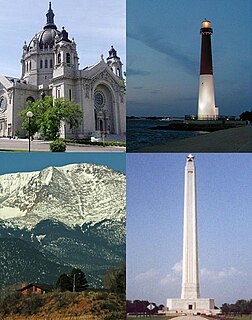
The U.S. National Register of Historic Places (NRHP) classifies its listings by various types of properties. Listed properties generally fall into one of five categories, though there are special considerations for other types of properties which do not fit into these five broad categories or fit into more specialized subcategories. The five general categories for NRHP properties are: building, district, object, site, and structure.

Robert Temple Summers II, is an American artist, in Cleburne, Texas. Summers, who works as a painter and sculptor, has created prominent bronze works displayed in places such as the Texas Ranger Hall of Fame and Museum, the Dallas Pioneer Park the Loews Anatole Hotel, Fair Park, Los Angeles International Airport, and Plano Texas' Baccus Plaza.

Lincoln Historic District is a historic district encompassing the community of Lincoln, New Mexico. The district was added to the National Register of Historic Places in 1966. The historic district contains 48 structures, some privately held, 12 miles (19 km) east of Capitan and 57 miles (92 km) west of Roswell along U.S. Route 380.

Taos Inn is an historic inn located in Taos, New Mexico. It is made up of several adobe houses dating from the 19th century, one of which was a home of Thomas "Doc" Martin which hosted the formative meeting of the Taos Society of Artists in 1915. After Doc's death, his widow Helen Martin converted the houses into a hotel, which opened on June 7, 1936 as Hotel Martin. The name was changed to "Taos Inn" by subsequent owners.
The National Register Information System (NRIS) is a database of properties that have been listed on the United States National Register of Historic Places. The database includes more than 84,000 entries of historic sites that are currently listed on the National Register, that were previously listed and later removed, or that are pending listing. The database includes approximately 45 pieces of data for each listed property. Accuracy of the NRIS database may be imperfect. For example, a 2004 paper addressed accuracy of spatial location data for part of the NRIS content.

West San Jose School, also known as Riverview School, is a historic former elementary school in the Barelas neighborhood of Albuquerque, New Mexico. It was built in 1936–37 as a Works Progress Administration project and operated as a school until 1975. It is now part of the National Hispanic Cultural Center. The building was added to the New Mexico State Register of Cultural Properties and the National Register of Historic Places in 1996.

The Berthold Spitz House is a historic house in Albuquerque, New Mexico, which is significant as the city's best example of Prairie School architecture. It was built around 1910 by Berthold Spitz and his wife Fannie Schutz Spitz (1873–1943). Berthold was a German Jewish merchant who was born in Bohemia and immigrated to Albuquerque around 1880. He ran a successful dry goods business and made a few forays into local politics before being appointed as the city's postmaster in 1921. Fannie grew up in El Paso and was notable as the inventor of the first commercial pine nut shelling machine. She was described by the Albuquerque Journal as "the greatest known authority on the piñon nut and its possibilities". The house was designed by Henry C. Trost of the El Paso firm of Trost & Trost. It was listed on the New Mexico State Register of Cultural Properties in 1975 and the National Register of Historic Places in 1977.
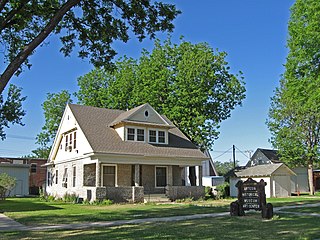
The Moore-Ward Cobblestone House, at 505 W. Richardson Ave. in Artesia, New Mexico, was built in 1905. It was listed on the National Register of Historic Places in 1984.

The John Acord House, on W. Main St. in Artesia, New Mexico, was built in 1908. It was listed on the National Register of Historic Places in 1984.
The Edward R. Gesler House, at 411 W. Missouri Ave. in Artesia, New Mexico, was built in 1907. It was listed on the National Register of Historic Places in 1984.
The Dr. Robert M. Ross House is a historic house in Artesia, New Mexico. It was built in 1904 for Dr Robert M. Ross, a physician from St. Louis, Missouri who became the founding president of the First National Bank of Artesia in 1903. His wife, who worked in the post office, co-founded the public library in Artesia. The house was designed in the Queen Anne architectural style. It has been listed on the National Register of Historic Places since March 2, 1984.
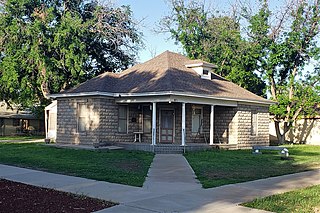
The F. L. Lukins House is a historic house in Artesia, New Mexico. It was built in 1906 for William Major, who later sold it to F. L. Lukins. The house was designed in the Queen Anne architectural style. It has been listed on the National Register of Historic Places since March 2, 1984.
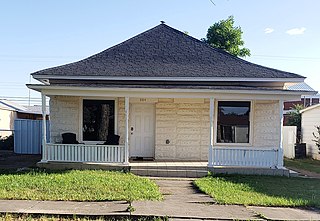
The Hodges-Sipple House is a historic house in Artesia, New Mexico. It was built in 1905 for John R. Hodges, the secretary and treasurer of the Artesia Improvement Company, a real estate development company, and the head of the Hollow Stone Manufacturing Company, an artificial stone company. The house was purchased by William Sipple, a real estate developer, in 1909. It has been listed on the National Register of Historic Places since March 2, 1984.
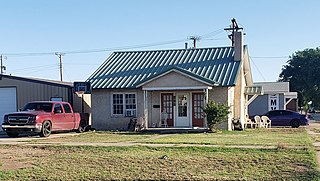
The Hodges-Runyan-Brainard House is a historic house in Artesia, New Mexico. It was built in 1904 for John Hodges, a real estate developer who used artificial stone to build many houses in Artesia. The house was purchased by rancher David W. Runyan in 1916. Two years later, his daughter Mary moved in with her husband, Reed Brainard. It has been listed on the National Register of Historic Places since March 2, 1984.
The South Spring Ranch, on Rt. 2 in Roswell, New Mexico, was listed on the National Register of Historic Places in 1989. The listing included five contributing buildings on 7 acres (2.8 ha).

Sarah Roberts "Sallie" Wagner was an American anthropologist, businesswoman, activist, filmmaker, and arts patron. She was one of the founding members of the Society for American Archaeology in 1934.
















